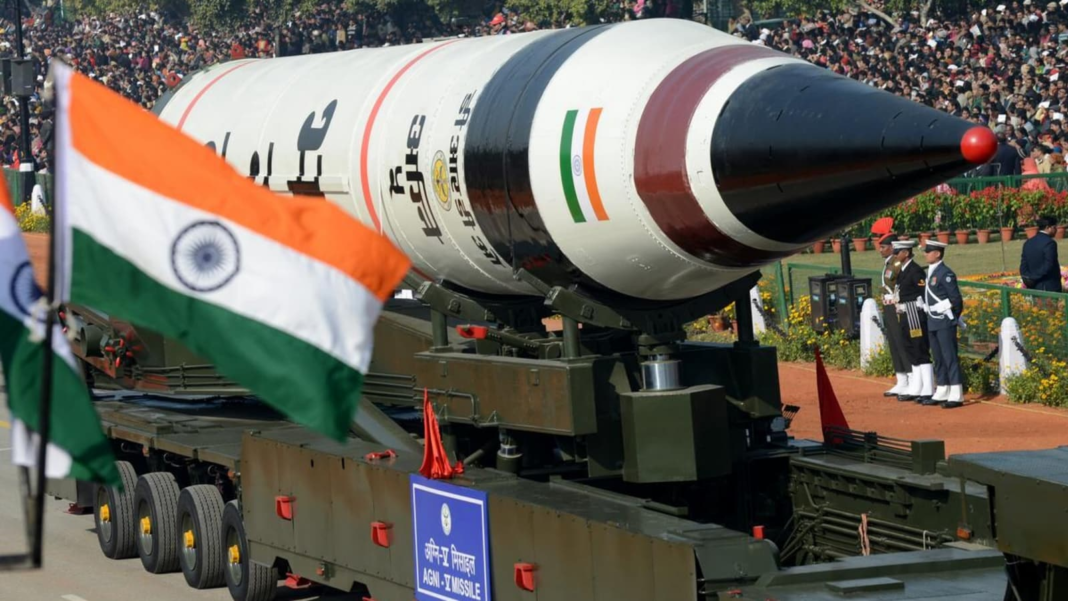Contents
India Develops New Bunker-Buster Missile: Agni-5 to Gain 7,500 kg Warhead for Deep Underground Strikes
India has initiated the development of a new class of high-powered missiles with bunker-buster capabilities, aimed at striking heavily fortified underground targets. The Defence Research and Development Organisation (DRDO) is working on a modified version of the Agni-5 intercontinental ballistic missile, designed to penetrate reinforced subterranean facilities. The upgraded variant will reportedly be capable of delivering a 7,500 kg bunker-buster warhead, enabling India to target enemy installations buried beneath layers of concrete.
The development of this new missile class comes in the wake of the recent use of Massive Ordnance Penetrator (MOP) bombs by the United States against Iranian nuclear sites. The existing Agni-5 missile has a range of over 5,000 km and carries conventional warheads, but the upgraded variant will have the capability to penetrate 80 to 100 meters underground, making it a significant addition to India’s armament. The new missile is intended to target command-and-control centers, missile silos, and critical military infrastructure, providing India with a robust deterrent capability.
India’s Intent to Match US Capabilities
The United States recently launched surprise strikes on a key underground uranium enrichment site at Fordow, along with nuclear facilities in Isfahan and Natanz, using B-2 bombers to drop a dozen bunker-buster bombs. India is seeking to match the capabilities of the US and is planning to go even further by designing its bunker-buster to be delivered using missiles, rather than relying on large and expensive bomber aircraft. This approach will provide India with greater flexibility, cost-efficiency, and rapid response capability.
Some key highlights of India’s new bunker-buster missile include:
* Capability to deliver a 7,500 kg bunker-buster warhead
* Ability to penetrate 80 to 100 meters underground
* Range of over 5,000 km
* Designed to target command-and-control centers, missile silos, and critical military infrastructure
* Will be a hypersonic weapon, expected to reach speeds between Mach 8 and Mach 20
Two Variants Under Development
The report further states that two new variants of the Agni-5 missiles are under development. The first variant will offer an airburst warhead for above-ground targets, while the latter will be a deep-penetrating missile designed to burrow into hardened subterranean infrastructure. The warhead is expected to weigh around eight tonnes, and the range of the weapon will be reduced to 2,500 km.
According to a DRDO official, “The development of the new Agni-5 variant is a significant milestone in India’s missile program. The bunker-buster capability will provide India with a robust deterrent capability, enabling us to target enemy installations buried beneath layers of concrete.”
Implications and Future Prospects
The development of the new Agni-5 variant has significant implications for India’s defense capabilities. The bunker-buster missile will provide India with a robust deterrent capability, enabling it to target enemy installations buried beneath layers of concrete. The missile’s hypersonic speed and ability to penetrate deep underground will make it a formidable weapon, capable of delivering a significant blow to enemy command-and-control centers, missile silos, and critical military infrastructure.
In conclusion, India’s development of a new bunker-buster missile is a significant milestone in its missile program. The Agni-5 variant, with its 7,500 kg warhead and ability to penetrate deep underground, will provide India with a robust deterrent capability, enabling it to target enemy installations buried beneath layers of concrete. As India continues to develop its defense capabilities, the new Agni-5 variant will play a crucial role in maintaining regional stability and security.
Keywords: India, Agni-5 missile, bunker-buster, Defence Research and Development Organisation, DRDO, hypersonic, missile program, defense capabilities, deterrent capability, command-and-control centers, missile silos, critical military infrastructure.
Hashtags: #India #Agni5 #BunkerBuster #DRDO #Hypersonic #MissileProgram #DefenseCapabilities #DeterrentCapability #CommandAndControlCenters #MissileSilos #CriticalMilitaryInfrastructure
Source link




